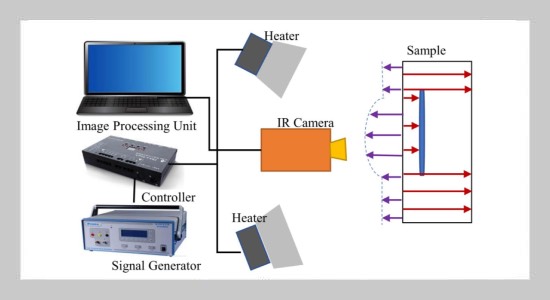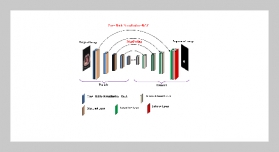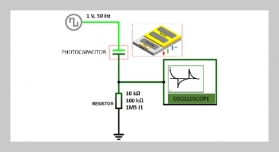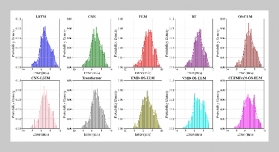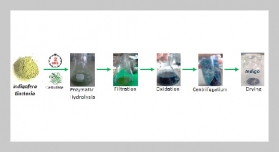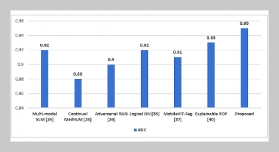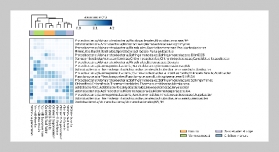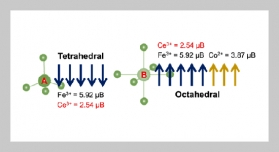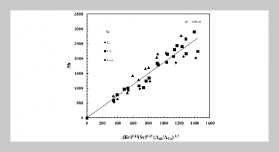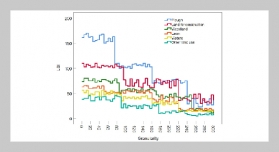- [1] F. Wang, J. Sheng, S. Sfarra, Y. Zhou, L. Xu, L. Liu, and J. Liu, (2023) “Multimode infrared thermal-wave imaging in non-destructive testing and evaluation (NDT&E): Physical principles, modulated waveform, and excitation heat source" Infrared Physics & Technology 135: 104993. DOI: 10.1016/j.infrared.2023.104993.
- [2] M. Ishikawa, M. Ando, M. Koyama, and H. Nishino, (2019) “Active thermographic inspection of carbon fiber reinforced plastic laminates using laser scanning heating" Composite Structures 209: 515–522. DOI: 10.1016/j.compstruct.2018.10.113.
- [3] H. Zhang, H. Fernandes, F. B. DjupkepDizeu, U. Hassler, J. Fleuret, M. Genest, and X. Maldague, (2016) “Pulsed micro-laser line thermography on submillimeter porosity in carbon fiber reinforced polymer composites: experimental and numerical analyses for the capability of detection" Applied optics 55(34): D1–D10. DOI: 10.1364/AO.55.0000D1.
- [4] W. Guo, L. Dong, H. Wang, Z. Xing, F. Feng, Z. Gao, and B. Wang, (2019) “Discriminate the substrate crack under sprayed coatings using ultrasonic infrared thermography" Infrared Physics & Technology 102: 103073. DOI: 10.1016/j.infrared.2019.103073.
- [5] Q. Yi, G. Y. Tian, H. Malekmohammadi, J. Zhu, S. Laureti, and M. Ricci, (2019) “New features for delamination depth evaluation in carbon fiber reinforced plastic materials using eddy current pulse-compression thermography" Ndt & E International 102: 264–273. DOI: 10.1016/j.ndteint.2018.12.010.
- [6] Y. He, B. Gao, A. Sophian, and R. Yang, (2017) “Transient electromagnetic-thermal nondestructive testing: pulsed eddy current and transient eddy current thermography" Butterworth-Heinemann:
- [7] F. Wang, J. Liu, Y. Liu, and Y. Wang, (2016) “Re search on the fiber lay-up orientation detection of unidirectional CFRP laminates composite using thermal-wave radar imaging" Ndt & E International 84: 54–66. DOI: 10.1016/j.ndteint.2016.08.002.
- [8] D. Sharath, M. Menaka, and B. Venkatraman, (2013) “Defect characterization using pulsed thermography" Journal of Nondestructive Evaluation 32: 134–141. DOI: 10.1007/s10921-012-0166-4.
- [9] M. Ishikawa, M. Ando, M. Koyama, and H. Nishino, (2019) “Active thermographic inspection of carbon fiber reinforced plastic laminates using laser scanning heating" Composite Structures 209: 515–522. DOI: 10.1016/j.compstruct.2018.10.113.
- [10] D. P. Almond and S. G. Pickering, (2012) “An analytical study of the pulsed thermography defect detection limit" Journal of Applied Physics 111(9): DOI: 10.1063/1.4704684.
- [11] R. Marani, D. Palumbo, U. Galietti, and T. D’Orazio, (2021) “Deep learning for defect characterization in composite laminates inspected by step-heating thermography" Optics and Lasers in Engineering 145: 106679. DOI: 10.1016/j.optlaseng.2021.106679.
- [12] C. Meola, G. M. Carlomagno, A. Squillace, and G. Giorleo, (2002) “Non-destructive control of industrial materials by means of lock-in thermography" Measurement Science and Technology 13(10): 1583. DOI: 10.1088/0957-0233/13/10/311.
- [13] S. Ekanayake, S. Gurram, and R. H. Schmitt, (2018) “Depth determination of defects in CFRP-structures using lock-in thermography" Composites Part B: Engineering 147: 128–134. DOI: 10.1016/j.compositesb.2018.04.032.
- [14] L. Liu, A. Mandelis, A. Melnikov, andL.Wang,(2022) “Comparative analysis of single-and multiple-frequency thermal wave radar imaging inspection of glass fiber reinforced polymer (GFRP)" International Journal of Extreme Manufacturing 4(2): 025201. DOI: 10.1088/2631-7990/ac57c8.
- [15] R. Yang, Y. He, A. Mandelis, N. Wang, X. Wu, and S. Huang, (2018) “Induction infrared thermography and thermal-wave-radar analysis for imaging inspection and diagnosis of blade composites" IEEE Transactions on Industrial Informatics 14(12): 5637–5647. DOI: 10.1109/TII.2018.2834462.
- [16] F. Wang, Y. Wang, J. Liu, and Y. Wang, (2019) “The feature recognition of CFRP subsurface defects using low energy chirp-pulsed radar thermography" IEEE Trans actions on Industrial Informatics 16(8): 5160–5168. DOI: 10.1109/TII.2019.2954718.
- [17] S. Hedayatrasa, G. Poelman, J. Segers, W. Van Paepegem, and M. Kersemans, (2019) “Performance of frequency and/or phase modulated excitation waveforms for optical infrared thermography of CFRPs through ther mal wave radar: A simulation study" Composite Struc tures 225: 111177. DOI: 10.1016/j.compstruct.2019.111177.
- [18] Z. T. Luo, P. Shen, H. Luo, S. Wang, X. K. Wu, and H. Zhang, (2022) “Advanced orthogonal frequency and phase modulated waveform for contrast-enhanced pho tothermal wave radar thermography" Journal of Ap plied Physics 131(22): DOI: 10.1063/5.0087734.
- [19] R. Li, C. Bu, H. Zhang, F. Wang, G. T. Vesala, V. S. Ghali, and V. P. Vavilov, (2024) “Dynamic infrared scanning thermography based on CNN: a novel large-scale honeycomb defect detection and classification technique" Journal of Thermal Analysis and Calorimetry: 1–17. DOI: 10.1007/s10973-024-13365-4.
- [20] G. Liu, W. Gao, W. Liu, Y. Wei, X. Zou, W. Bai, and P. Chen, (2024) “Low-velocity impact damage detection in CFRP composites by applying long pulsed thermography based on post-processing techniques" Nondestructive Testing and Evaluation 39(7): 1946–1959. DOI: 10.1080/10589759.2023.2284248.
- [21] T. Matarrese, D. Palumbo, and U. Galietti, (2023) “Comparison in the transient regime of four lock-in thermography algorithms by means of synthetic and experimental data on CFRP" NDT & E International 139: 102925. DOI: 10.1016/j.ndteint.2023.102925.
- [22] Y. He, X. Mu, J. Wu, Y. Ma, R. Yang, H. Zhang, P. Wang, H. Wang, and Y. Wang, (2024) “Intelligent detection algorithm based on 2D/3D-UNet for internal defects of carbon fiber composites" Nondestructive Testing and Evaluation 39(4): 923–938. DOI: 10.1080/10589759.2023.2234548.
- [23] Y. Dong, B. Zhao, J. Yang, Y. Cao, and Y. Cao, (2023) “Two-stage convolutional neural network for joint removal of sensor noise and background interference in lock-in thermography" NDT & E International 137: 102816. DOI: 10.1016/j.ndteint.2023.102816.
- [24] Z. Tong, L. Cheng, S. Xie, and M. Kersemans, (2023) “A flexible deep learning framework for thermographic inspection of composites" NDT & E International 139: 102926. DOI: 10.1016/j.ndteint.2023.102926.
- [25] J. Liu, X. Long, C. Jiang, and W. Liao, (2024) “Multi feature vision transformer for automatic defect detection and quantification in composites using thermography" NDT & E International 143: 103033. DOI: 10.1016/j. ndteint.2023.103033.
- [26] A. Katunin, K. Dragan, T. Nowak, and M. Chalimoniuk, (2021) “Quality control approach for the detection of internal lower density areas in composite disks in idustrial conditions based on a combination of NDT techniques" Sensors 21(21): 7174. DOI: 10.3390/s21217174.
- [27] Y. He, S. Chen, D. Zhou, S. Huang, and P. Wang, (2018) “Shared excitation based nonlinear ultrasound and vibrothermography testing for CFRP barely visible impact damage inspection" IEEE Transactions on Industrial Informatics 14(12): 5575–5584. DOI: 10.1109/TII.2018. 2820816.
- [28] X. Meng, Y. Wang, J. Liu, and W. He, (2019) “Non destructive inspection of curved clad composites with subsurface defects by combination active thermography and three-dimensional (3D) structural optical imaging" Infrared Physics & Technology 97: 424–431. DOI: 10.1016/j.infrared.2019.01.026.
- [29] J. Li, B. Gao, W. L. Woo, J. Xu, L. Liu, and Y. Zeng, (2023) “A novel multispectral fusion defect detection framework with coarse-to-fine multispectral registration" IEEE Transactions on Instrumentation and Measurement 73: 1–13. DOI: 10.1109/TIM.2023.3344145.
- [30] J. Liu, X. Long, C. Jiang, and W. Liao, (2024) “Multi feature vision transformer for automatic defect detection and quantification in composites using thermography" NDT & E International 143: 103033. DOI: 10.1016/j.ndteint.2023.103033.
